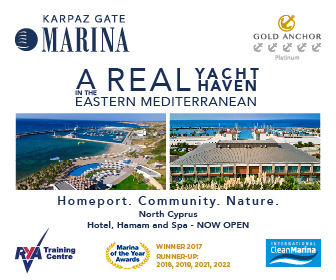Portrait of a Cruiser: Allen and Maria Wadsworth
Allen and Maria Wadsworth have been contributing information to Noonsite ever since they cast off their dock lines from the UK in 2017. Cruising double-handed in their Moody ’42 “Lady Jane”, they have enjoyed the Caribbean and east coast of the USA before transiting the Panama Canal in March of this year and crossing the Pacific. They are now in French Polynesia where they intend to spend a couple of seasons before moving onwards to NZ.
Published 5 years ago

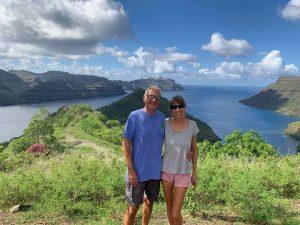
- Allen and Maria in Nuku Hiva, French Polynesia
Names of Owners: Allen and Maria Wadsworth
Nationality: British
Boat Name: LADY JANE
Boat Type/Model and Size: Moody 425 (42ft) built in 1988
Your Home Port: Hamble, Southampton, UK
Blog: untilthebuttermelts.com
How did you start cruising?
I bought Allen a “Red Letter Day Sailing Experience”- a chilly 3-hour sail on the Solent that I thought would curtail any idea of him adopting sailing as a hobby. But, when he returned, he said ‘I want to learn to sail.’ He then worked his way through RYA courses and gained some offshore experience as crew. Later, we enjoyed a few flotilla holidays in the Ionian, which I loved. We progressed to bareboat charter holidays in Greece and thought that one day we may buy a boat there. At that time, unlike Allen, I had no plans to leave the house and sail off into the sunset. But, we ended up buying our first boat in the UK, sailing her out of Gosport, which gave us a lot of experience of busy shipping areas and dealing with things that can go wrong (engine failure when coming out of Portsmouth harbour, when a ship is coming in, helps hone your skills.) A few years later I also took RYA courses up, to Day Skipper.
Describe what sort of cruisers you are:
We sold most of our furniture, rented our house and have lived aboard Lady Jane since May 2017. We sailed with crew from the Canaries to Cape Verde, but since then have sailed on our own.

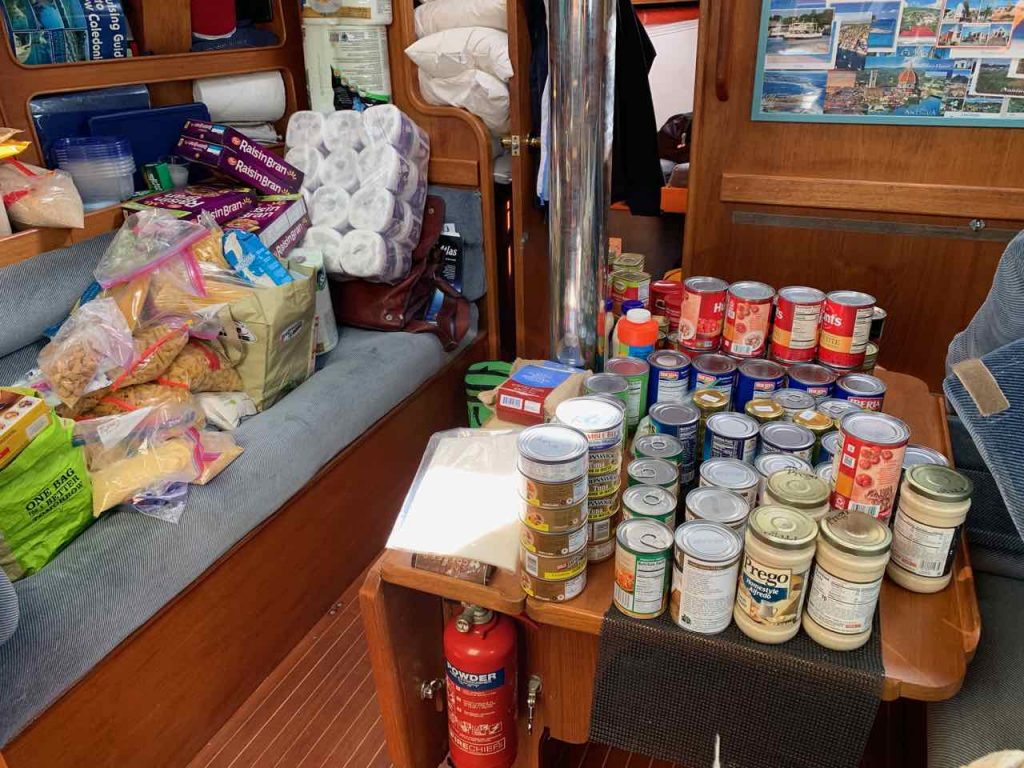
- Provisioning madness
What type of cruising are you doing currently?
We sailed from England in June 2017, and crossed the Atlantic, with Jimmy Cornell’s Islands Odyssey in November 2017 – arriving in Barbados 16-days later. After a season in the Caribbean, we headed to Bermuda, then the USA for hurricane season, before heading south via the Bahamas, Cuba and Jamaica to Panama where we transited the canal in March 2019. After a stop in the Galapagos, we are now in French Polynesia, where we intend to stay for another season before heading towards New Zealand.

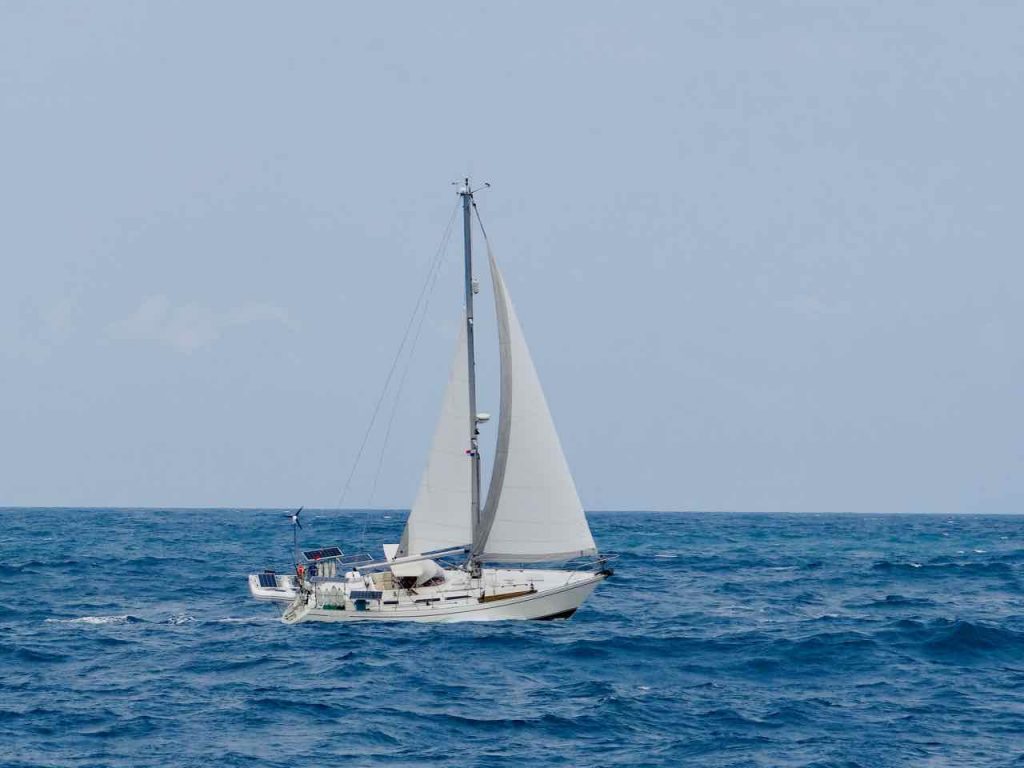
- Lady Jane sailing in Panama
What were the key reasons you selected your current boat?
Safety and comfort. Lady Jane is a well-built, solid, blue-water boat. And she has a bed that we can get into without climbing over each other!
What other boats have you owned?
Our first boat was Fliss, a Sabre 27, bought in 2005. When we went to see Fliss on the hard, underneath was a piece of wood with the name Jade (our daughter’s name) painted on it. Inside the boat were Tia Maria glasses – and the name Fliss was my Gran’s nickname. These were taken as good omens and we bought the boat. We sailed her around The Solent until 2012 when we sold her and moved to Singapore for two years. Upon our return, we bought a Westerly Konsort, and sailed her until 2015 when we decided to buy a boat and sail away. That’s when we bought Lady Jane.

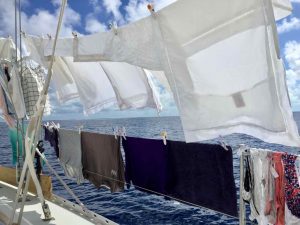
- A day in the life of a cruiser
What changes have you made to your current boat?
We have added new sails, replaced the chart plotter and autopilot, installed new solar panels, a wind generator, bimini, folding wheel, a small inverter, a watermaker and a Natures Head composting toilet.
Most useful equipment fitted:
Watermaker: We didn’t realise how much we relied on it until the feed pump broke in French Polynesia (not the best place for that to happen.) Having the ability to create our own water, anywhere, is such a luxury.
Solar: We set off from the UK with 270 watts of solar, but added another 540 watts in the US. Now we hardly ever need to run the engine to satisfy our power needs.
Wind generator: Many comments on sailing forums suggested that a wind generator is a waste of time because you are either sailing downwind or are parked in a calm anchorage. I’d like to know where these wind-free anchorages are – we haven’t found them. The wind generator helps top up the batteries when the sun isn’t around.
Dyson handheld vacuum cleaner: A surprising amount of dust gets into the boat no matter where we are. This super device takes up very little room and has performed flawlessly.
Small inverter: It’s only 250 watts, but it’s enough to charge up our computers and the vacuum cleaner, and work the sewing machine.
Equipment regrets, or things you would do differently:
Sewing machine: We bought a heavy-duty domestic one in the UK, but wish we would have bought a Sailrite machine while in the USA. The tropics are relentless on stitching and our existing machine finds sewing through multiple layers of Sunbrella to be hard work.

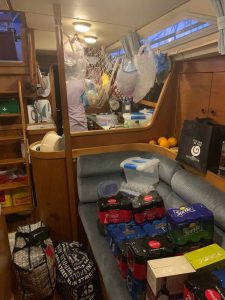
- Post-provisioning chaos onboard Lady Jane
List the countries you have cruised:
England, France, Channel Islands, Spain, Portugal, Morocco, Canary Islands, Cape Verde, Barbados, St Vincent & The Grenadines, St Lucia, Martinique, Montserrat, Dominica, Guadeloupe, Granada, Antigua, Bermuda, USA, The Bahamas, Cuba, Jamaica, San Blas, Galapagos, currently in French Polynesia.
Future cruising plans:
We will stay in French Polynesia for another season, and in 2020 we plan to sail to New Zealand. We then will look to continue towards SE Asia. Beyond that, we don’t have any firm plans.
List the oceans/seas you have crossed:
The English Channel, Bay of Biscay, Atlantic Ocean, Caribbean Sea, Pacific Ocean
Approximate sea miles:
On this voyage: approximately 15,000
Scariest day on the water:
We were anchored in Worton Creek in the Chesapeake. It was about 10 pm, we had just had dinner and were thinking about going to bed when the wind started to howl. We sat looking at our position on Navionics on the iPad when we suddenly started to move. We jumped up into the cockpit and started the engine. We had dragged (it’s worrying how far you travel at 1.5 knots), but it seemed like the anchor had dug itself back in.

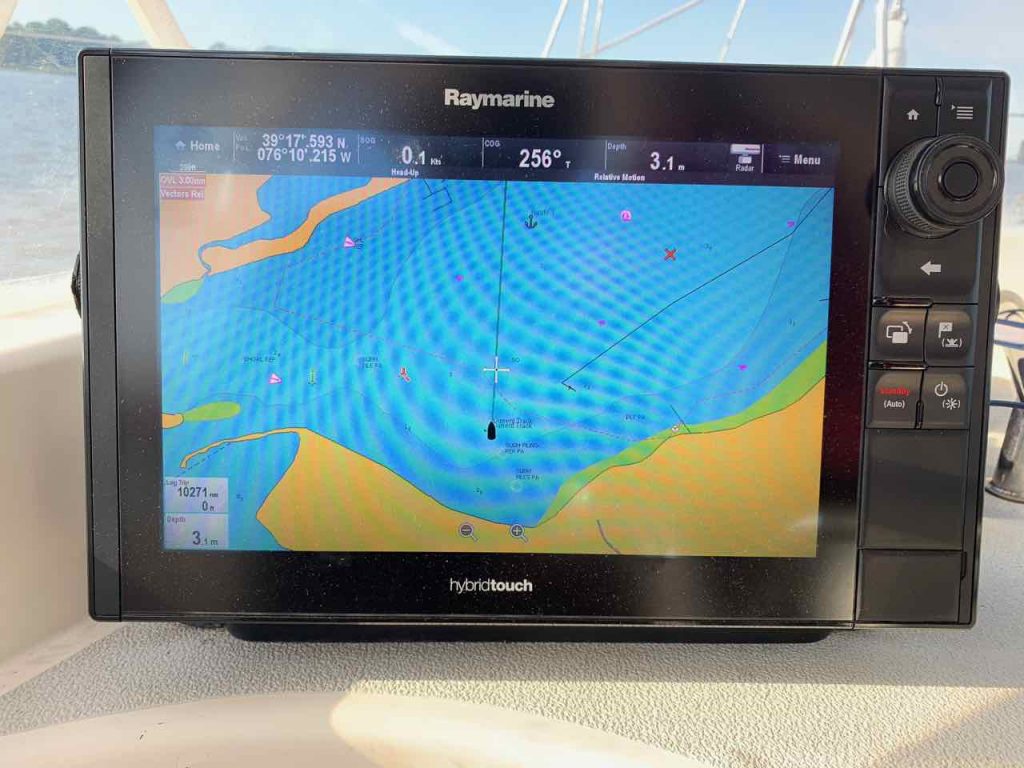
- The anchor dragging in Worton Creek
The wind was still howling. We put on the VHF radio and heard the coastguard announce that there was a freak storm warning across the Chesapeake. A bit late now we thought! While Allen controlled the boat, I put on my life jacket and safety line and went up to release the snubber so we could lay out some chain (although we already had a 7-1 scope out) to ensure we were definitely anchored in the mud. I couldn’t get the snubber released from the chain, because it had bent under the pressure. So, Allen went forward with mole grips and a hammer to sort it out. We kept anchor watch for a couple of hours afterwards until the wind reduced to a F6.

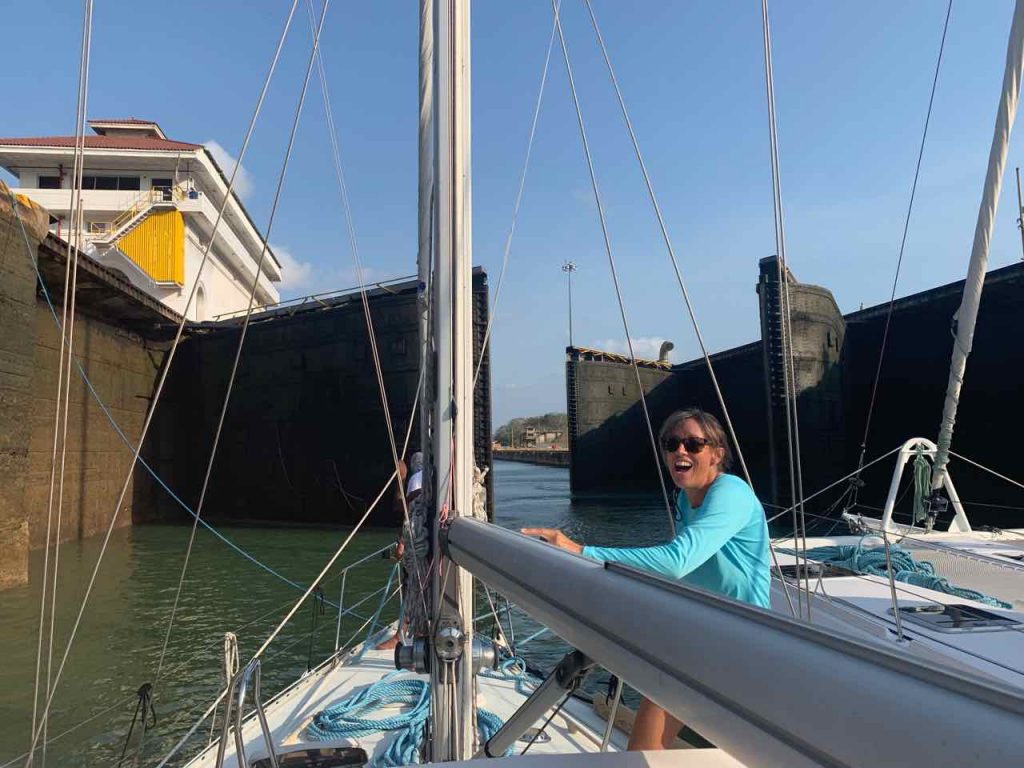
- The Gateway to the Pacific
Best cruising moment:
The most emotional for me was transiting the Panama Canal. I had never done any overnight sailing or even been on watch by myself when we left the UK. The Panama Canal just seemed to so far away and now we’d done it!
Favorite cruising area and why:
It’s hard to say. We liked the Caribbean for its relatively flat seas, consistent trade winds and convenient anchorages. But, despite the rolling (no-one seems to mention that about the Pacific), we also like French Polynesia for its natural beauty, crystal clear waters, and friendly people.

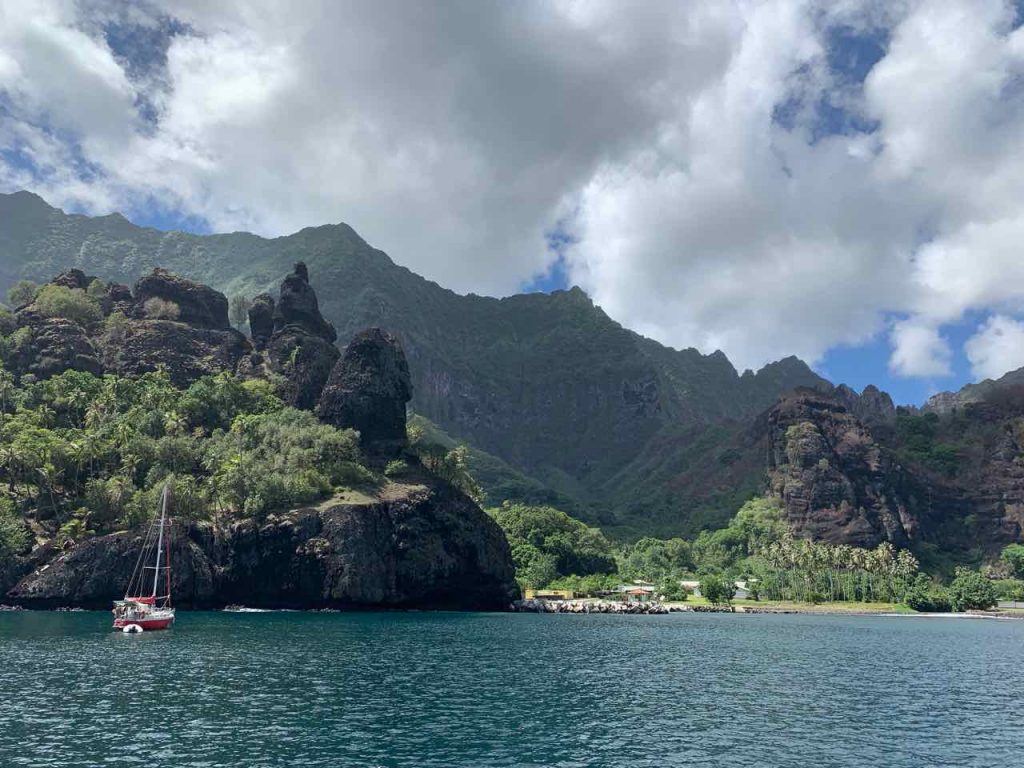
- Fatu Hiva – Marquesas – French Polynesia
Favorite anchorage:

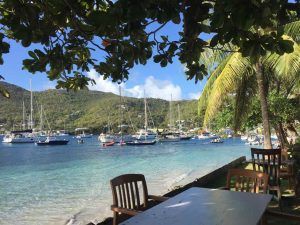
- Bequia – St. Vincent and the Grenadines
In the Caribbean:
Bequia, because it has everything for sailors. You can get water and diesel delivered to your boat You can also pass them your laundry and get it returned the following day. We also discovered pizza and curry delivery. Everything on land was also there, good dinghy docks, fresh fruit, supermarkets, and a chandlery. And the town is exceptionally pretty.
In French Polynesia:
Fakarava south pass, for drift snorkeling with the sharks.
Favorite cruising apps:
Navionics on the iPad and iPhone, and Predictwind – which simplifies access to weather forecasts either via internet or satellite.

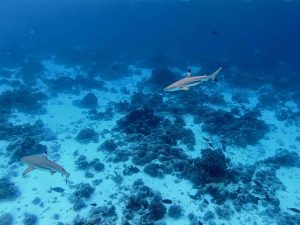
- Fakarava South Pass – Tuamotus – French Polynesia
Favorite cruising websites:
Probably our most used, and useful, source of information is Noonsite. We also took inspiration from Chris and Lorraine Marchant on Gryphon II (http://blog.mailasail.com/gryphon), and read the cruising sites of our other friends:
- Bill and Moira on Krabat (https://www.sailblogs.com/member/krabat/459175),
- Julian and Patricia on A Capella Of Belfast (https://acapella.org.uk) and
- Jan Dirk and Jana on JaJapami (https://jajapami.blog).
Favorite cruising books:
We refer to Jimmy Cornell’s books on a regular basis: “World Voyage Planner”, “World Cruising Routes” and “World Cruising Destinations.” And have read several books relating to ocean cruising, including those written by Slocum, Moitessier, Miles Smeeton, and Knox Johnston. And a couple more on the Golden Globe race, including the excellent “A Voyage for Madmen” by Peter Nichols.
What advice or message would you want to pass on to anyone new to cruising or thinking about casting off the dock lines?
Just go for it. You will always have jobs to be done, so there is no point in delaying. When we left, we took a new teak cockpit floor with us (which we fitted in Portugal). The list of jobs will never end. Just make sure your boat is seaworthy, that you have all the safety equipment – and get some sail training before you go. Allen is a very good captain. He remains calm when things go wrong, which gives me confidence and makes for a happy crew!

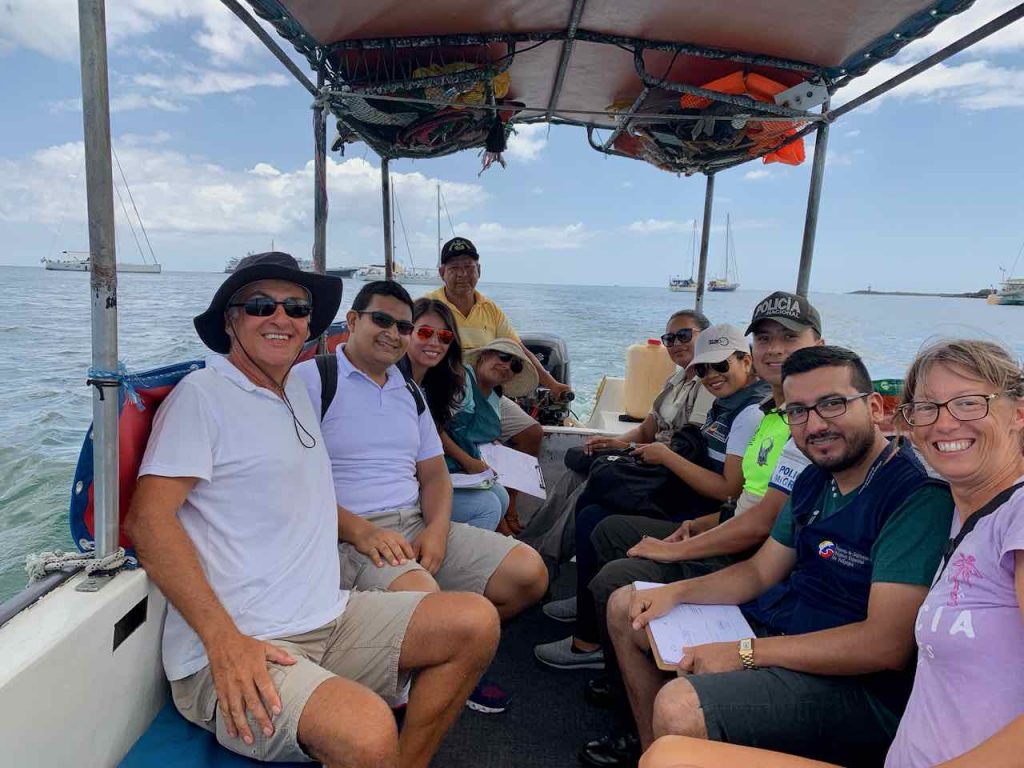
- With officials in the Galapagos
What is it that inspires you to keep cruising?
The world is such a big and beautiful place and we see a different side to those who land on an island by plane for a two-week holiday. We see kindness and friendship in the most remarkable places. Everywhere we go we learn something new about the places we visit: the geology, geography and the culture, which challenges our own perceptions of the best way to live your life. Many of the people we meet have very little in the way of material possessions, but there is no correlation between that and their level of happiness. So, it’s an ongoing – and very enjoyable – learning experience for the crew of Lady Jane.

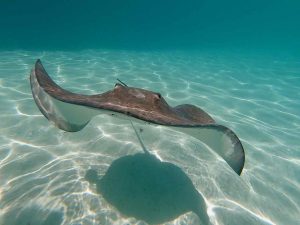
- A ray in Moorea, French Polynesia
All the countries that we have visited so far, the places that you thought would be the least aware of recycling are actually the ones that have better recycling facilities. The Marquesas has a new recycling policy and Nuku Hiva and Ua Pou have recycling bins. I sometimes remove non-essential packaging when we’ve been through the checkout at the supermarket. Paradoxically, the USA and the Galapagos were the worst for recycling. Europe seemed to be the best.
I think sailing has taught us more about different cultures and about how we should have respect for other people’s way of life. If you only have a small house to live in and you eat fish from the sea and a couple of vegetables you have grown, you may consider yourself very wealthy.
…………………………………………………………………………………………………………………………………..
The opinions expressed in this article are the author’s own and do not reflect the view of Noonsite.com or World Cruising Club.
Related to following destinations: Bequia, French Polynesia, St. Vincent & the Grenadines, United Kingdom
Related to the following Cruising Resources: Circumnavigation, Portrait of a Cruiser




